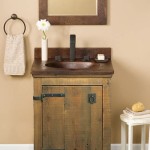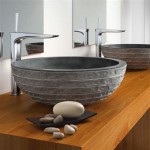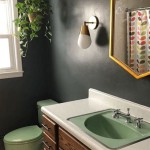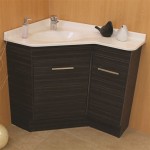Why Does My Bathroom Sink Always Get Clogged?
A persistently clogged bathroom sink can be a frustrating recurring problem. Understanding the common culprits behind these blockages empowers homeowners to address the issue effectively and implement preventative measures.
Common Causes of Bathroom Sink Clogs
Several factors contribute to frequent bathroom sink clogs. Identifying the source is the first step towards a lasting solution.
1. Hair: Hair is arguably the most frequent cause of bathroom sink clogs. Strands of hair readily collect in the drain, trapping soap scum, toothpaste, and other debris, forming a stubborn blockage.
2. Soap Scum: Soap, especially bar soap, contains fats and oils that combine with minerals in hard water to create soap scum. This sticky substance adheres to the inside of pipes, gradually accumulating and restricting water flow.
3. Toothpaste: While seemingly innocuous, toothpaste can contribute to clogs. Its thick, pasty consistency allows it to bind with hair and other debris, further solidifying the blockage.
4. Mineral Buildup: Hard water contains high levels of dissolved minerals, primarily calcium and magnesium. These minerals can precipitate out of the water and accumulate within pipes, leading to restricted flow and eventually complete blockages.
5. Foreign Objects: Small items like jewelry, cotton balls, dental floss, and children's toys can accidentally fall into the drain and become lodged, obstructing water flow.
6. Biofilm: Biofilm is a slimy layer of bacteria that can grow inside drain pipes. It traps other debris, contributing to clogs and often causing unpleasant odors.
7. Plumbing Issues: Less common, but still possible, are underlying plumbing issues like improperly vented pipes or pipe damage. These problems require professional plumbing expertise to rectify.
Diagnosing the Clog
Before attempting to clear a clog, it's helpful to try and determine the cause. Visual inspection can often reveal hair or other foreign objects near the drain opening. Slow draining indicates a partial blockage, while standing water suggests a more complete obstruction further down the drainpipe.
Methods for Clearing Bathroom Sink Clogs
Several methods can be employed to clear a clogged bathroom sink, ranging from simple DIY solutions to professional plumbing interventions. Selecting the appropriate method depends on the severity and suspected cause of the clog.
1. Boiling Water: Pouring boiling water down the drain can sometimes melt soap scum and grease, alleviating minor clogs. However, caution should be exercised as boiling water can damage PVC pipes.
2. Baking Soda and Vinegar: This classic combination creates a chemical reaction that can help break down organic matter. Pour one cup of baking soda down the drain, followed by one cup of vinegar. Let it fizz for 30 minutes, then flush with hot water.
3. Plunger: A cup plunger is designed specifically for sinks and bathtubs. Ensure a good seal around the drain opening and plunge vigorously up and down to create suction and dislodge the blockage. Be sure to add enough water in the sink to submerge the cup of the plunger to ensure effective suction.
4. P-Trap Removal: The P-trap is the curved pipe located under the sink. Placing a bucket underneath, carefully loosen the slip nuts connecting the P-trap and remove it. Clean out any debris trapped inside before reassembling.
5. Drain Snake/Auger: A drain snake, also known as a plumbing snake or auger, is a flexible tool that can be inserted into the drain to break up or retrieve clogs. Hand-cranked and motorized versions are available.
6. Chemical Drain Cleaners: Chemical drain cleaners contain harsh chemicals that dissolve clogs. While effective, they should be used as a last resort due to their potential to damage pipes and the environment. Always follow the manufacturer's instructions carefully and wear appropriate protective gear.
7. Professional Plumber: For persistent clogs or suspected plumbing issues, it's best to consult a professional plumber. They have the expertise and specialized equipment to diagnose and resolve complex plumbing problems.
Preventing Future Clogs
Preventing future clogs is often easier than clearing them. Implementing a few simple preventative measures can significantly reduce the frequency of bathroom sink blockages. These strategies save time, money, and frustration in the long run.
1. Hair Strainers/Catchers: Placing a hair strainer or catcher over the drain opening is a simple yet highly effective way to prevent hair and other debris from entering the drain.
2. Regular Flushing: Periodically flushing the drain with hot water can help prevent the buildup of soap scum and grease.
3. Proper Disposal of Debris: Dispose of items like cotton balls, dental floss, and other potential clog-causing materials in the trash, not the sink.
4. Periodic Cleaning: Regularly cleaning the drain with baking soda and vinegar or a mild drain cleaner can help prevent the accumulation of biofilm and mineral deposits.
5. Water Softener (for hard water): Installing a water softener can reduce mineral buildup in pipes, mitigating a contributing factor to clogs in areas with hard water.

Why Is Your Bathroom Sink Clogged Order A Plumber

Why Does My Bathroom Sink Clog

How To Unclog A Bathroom Sink Hana S Happy Home

How To Unclog A Bathroom Sink Hana S Happy Home

Why Is My Sink Clogged Mike Diamond
.png?strip=all)
What Keeps Clogging My Drain

How To Clear A Clogged Drain Reviews By Wirecutter

How To Unclog A Bathroom Sink Hana S Happy Home

How To Prevent Drain Clogs In Your Home Patrolplumbing

Plumbers 911 Help My Bathroom Sink Is Clogged
Related Posts







